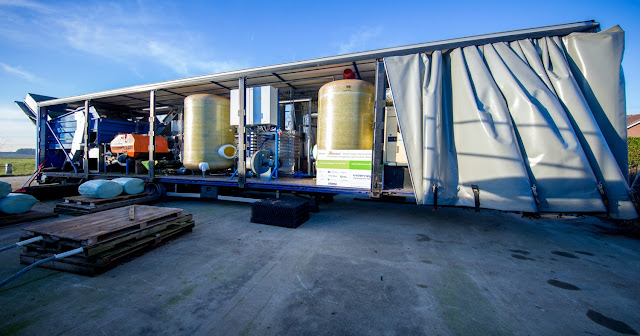Profile: Biorefinery Glas - Small-scale farmer-led green biorefineries
Type of post: PROJECT PROFILE.
Beginning in 2019, a new EIP-Agri
project focused on small-scale green biorefining will illuminate the way of the
rural bioeconomy in Ireland. It is not the first time that the Blog features an
initiative of this European Innovation Partnership (EIP), which is aimed at
promoting the sustainable and productive agriculture providing an interface
between agriculture, bioeconomy, science and other users. Let us know the
highlights of this promising project.
Key data
Title
|
Biorefinery Glas
|
Activities
|
- Demonstrate a small-scale mobile biorefinery on multiple farms in the
South West of Ireland, supporting farmers in evaluating opportunities to
diversify into the bioeconomy.
- Ensure that each component of grass is used at its highest value, with
the simultaneous generation of multiple products.
- Promote farm-to-farm symbiosis and cooperation.
- Facilitate several knowledge exchange activities, including training of
farmers on the operation of small-scale biorefineries.
- Deliver dissemination package with farmers playing a central role,
sharing this experiences with other farmers and relevant multi-actors through
a digital storytelling initiative.
|
Leader
|
- Institute
of Technology, Tralee (ITT): a higher education and research institute
in the South West of Ireland, leading research in bioresouces and natural
products
|
Partners
|
- Barryroe
co-operative: farmer owned multi-purpose agribusiness.
- Carbery
Group: is a leading global manufacturer of specialty and
nutritional dairy ingredients as well as flavours and cheeses.
- GRASSA B.V.:
green biorefinery technology developer.
- University
College Dublin (UCD): one of Europe's leading research-intensive
universities in agriculture and bioeconomy.
|
Budget
|
940.948 €.
It is co-funded by the Irish Department of Agriculture, Food and Marine
(Rural Development Programme 2014-2020) and the EU.
|
Duration
|
2 years.
|
Figure 1. Small-scale
biorefining system of Grassa! (courtesy of Grassa!)
The biorefinery model and the products
The process is one that
integrates well within existing agriculture system, producing a press-cake feed
that is high in resistant protein (nondigested protein) for cattle, while also generating
additional high value co-products that can represent an additional revenue
source for farmers. The model has a processing capacity of 2 tons fresh grass
per hour.
Proteins
Firstly, the proteins that
cows use most effectively are isolated from the grass, while separating the
remainder of the protein for use as a concentrate feed for pigs or chickens. This
approach improves the efficiency of nitrogen use for milk production and allows
to provide pigs and chickens with grass protein, an indigenous source of
protein concentrate. An expected benefit of improving the nitrogen use
efficiency for milk, includes a potential reduction in nitrogen loses and
ammonia-related emissions for the dairy (and potentially beef) sector, while
indirect emissions from soybean monogastric imports can also be displaced.
Fructo-oligosaccharides
An additional value-added
co-product in fructo-oligosaccharides (prebiotic sugars) will be extracted from
the deproteinized grass whey. It has potential applications for the human and
animal nutritional markets.
Fertilizer / Biomethane
Finally, once the relevant
products are extracted, large volumes of nutrient-rich whey can be used as a
fertilizer or as a co-substrate for biomethane production through anaerobic
digestion.
The impacts
The Biorefinery Glas project
will promote farm-to-farm bioeconomy symbiosis and demonstrate new business
models for farmers. The project builds on a strong existing co-operative
structure to evaluate new routes to market for cattle farmers, generating
additional co-products using small-scale bioeconomy technologies. For example,
using co-op partners to upgrade the protein co-product into a finished and
marketable compound feed for chickens and pigs.
The biorefinery includes
automated features to make eventual uptake by farmers and contractors possible.
In this way, it is expected that the project will begin to change the role of
farmers within the bioeconomy, making them biomass processors and producers,
rather than simply biomass suppliers.
The need to improve
integration of farmers within the bioeconomy using small-to-medium biobased
solutions is recognised within the 2018 EU Bioeconomy Strategy update.
Biorefinery Glas represents Ireland's first farm-scale biorefinery project.





